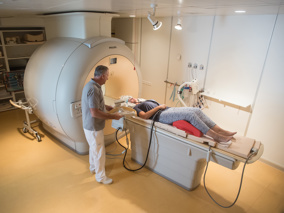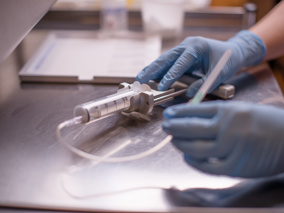Salivary gland cancer/salivary gland tumor
Salivary gland cancer originates in the salivary glands. These glands are located in and around the mouth and make saliva. There are three large salivary glands and a number of small salivary glands. Tumors in the salivary glands can be benign or malignant. There is a different risk of malignancy per gland:
- Parotid gland: 20% are malignant
- Submandibular salivary gland: 50% are malignant
- Tongue salivary gland: 70% are malignant
- Small salivary glands in the mouth, nose and throat: 80% are malignant
On this page you can read more about the symptoms, examinations and treatments for salivary gland cancer.
Learn more about salivary gland cancer
Causes of Salivary Gland Cancer
Salivary gland cancer is equally common in men and women. Most people with this type of cancer are over 40 years old. We don't know exactly what the cause is. Skin cancer can also spread to the salivary glands. We call this a metastasis.
Symptoms of salivary gland cancer
If you have salivary gland cancer, you may suffer from the following signs and symptoms:
- Pain
- Problems with the facial nerve
- Swelling in cheek, in front and under the ear or under the jaw
- Swelling in the neck (this occurs when the cancer has spread to the salivary gland)
Pain and problems with the facial nerve are more common in malignant tumors.
Waiting
We want to inform you as well as possible about the waiting time per condition. We do this based on a prognosis of the current waiting list. The waiting time can vary from patient to patient for various reasons. Your attending physician will give you more information during your outpatient consultation.
-
5 days
First appointment
This is approximately how long it will take until you have your first appointment
-
5 days
Rapid diagnostics
This is approximately how long it will take before you can start rapid diagnostics at the NKI
-
7 days
Second opinion
This is approximately how long it will take before you come in for a second opinion at the NKI
 nl
nl





